Devlog #1 - Milestone #1
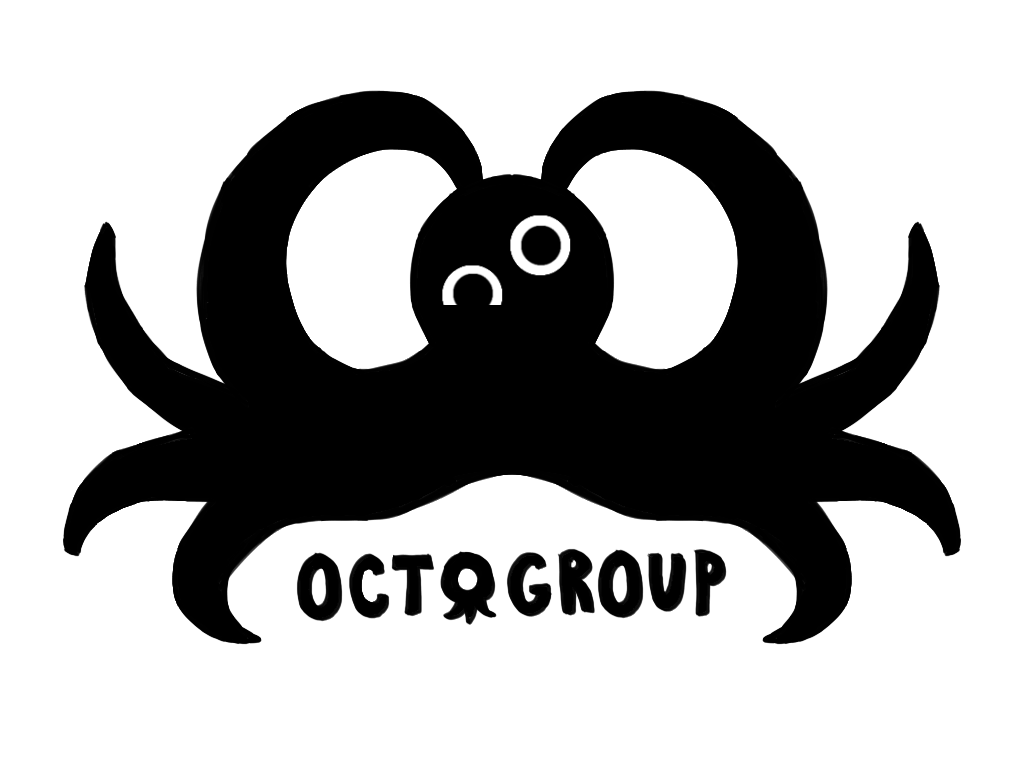
Hello!
Welcome to the first development log for Give Me A Hand by Octogroup, a cooperative puzzle game where multiple players control the limbs of an octopus in their quest to escape an aquarium! This log summarizes the progress made during the initial development phase (Game Jam #2).
Saturday, May 17th marked the 2nd game jam all members would need to complete for the course, and was the first time all members were able to work alongside one another in-person. The jam lasted exactly 4.5 hours from 10:30 AM to 3:00 PM, and allowed the team to explore our concept with the Unity engine and develop a prototype for the player/tentacle movement we will be using moving forward.

Group Workflow
Octogroup as a whole has decided to use SCRUM and sprints as our main workflow models. We will use task tracking and designation tools such as Notion to keep the team on track throughout each week. We heavily rely on documents and documentation to keep all members on the same page, and always aim to keep meetings concise and to-the-point.
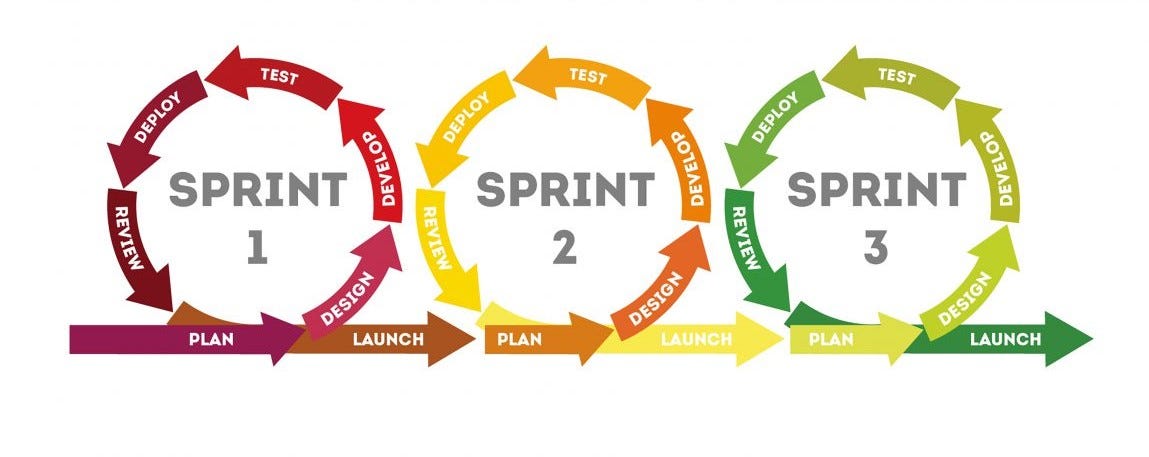
Game Design
This game is designed around providing a quick and unpredictable experience with a focus on wacky movement and control schemes. Inspired by games like Octodad, Human Fall Flat, and Overcooked, we decided to design around the use of multiple players to each control their assigned tentacle of an octopus, making the maximum number of players 8. This game is designed more so with gamepad users in mind, but it can support keyboard controls as well. The image below illustrates supported inputs on both platforms (PC, console):
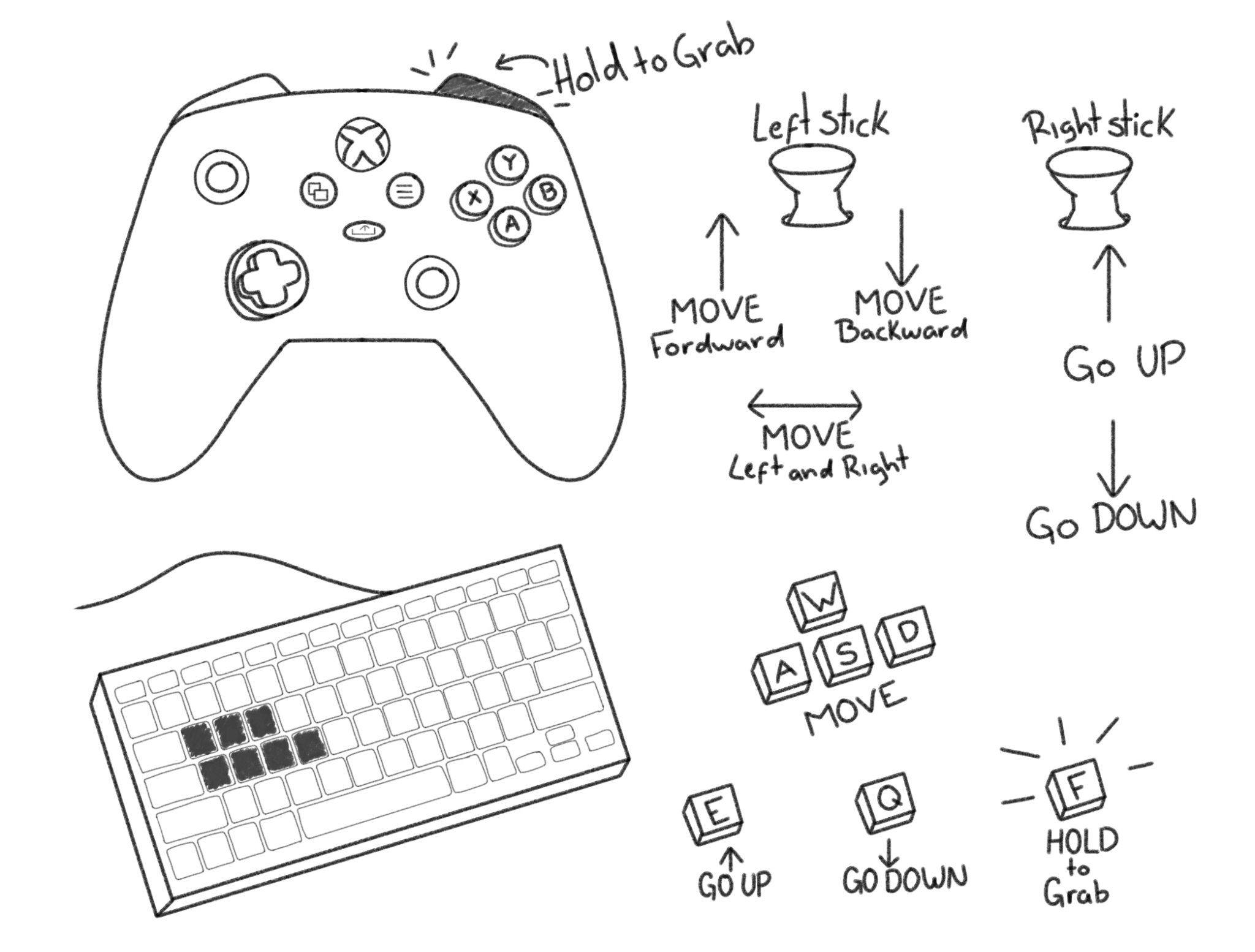
Each player's tentacle is used to move around and grab at the ground to pull the body towards the grab location. Each tentacle is able to grab other objects and throw them as well. The introduction of multiple players leads to much more chaotic interactions with multiple tentacles grabbing things and applying forces to the body. The player will be moving through an environment carefully curated around the player's movement metrics. They may also encounter puzzles throughout that must be solved with multiple players, or by utilizing the mechanic of picking up and throwing objects.

Current Implementations
As of the end of Game Jam #2, we have successfully tested the control of a single tentacle, with support for both keyboard and game controller input. In this setup, players will eventually collaborate by each controlling a different limb, collectively driving the octopus’ movement. While full multiplayer control is not yet implemented, this milestone lays the groundwork for the cooperative movement system. The list below outlines many of the features we have been able to add within our first prototype:
Defined Group Movement Behavior:
- The octopus now moves in the net direction determined by the vector sum of all active tentacle inputs. This reinforces the importance of coordination and communication.
Armature Setup (Blender → Unity):
- Created a rigged tentacle armature in Blender using a chain of bone items.
- Each bone is connected to its parent via configurable joints in Unity, allowing for flexible, physics-based motion.
Tentacle Hand Control (Prototype):
- Introduced a floating child object ("Tentacle Hand") within each tentacle to act as a movement proxy.
- Input methods: keyboard (testing) and gamepad thumbstick (production setup).
- Implemented vector sum calculations based on relative tentacle position to determine movement of collective octopus.
Tentacle Forearm (Prototype):
- The last segment of the tentacle (end bone) is not directly controlled due to instability in Unity’s physics system (e.g., twitching, erratic behavior).
- Instead, it follows the Tentacle Hand via a “Tentacle Forearm” script, providing more stable, realistic motion through indirect influence.
Movement Manager (Early Testing):
- Implemented a movement manager that calculates a directional vector sum from each tentacle's input.
Camera & Head Tracking (Prototype):
- Implemented dynamic octopus head tracking: the head now follows the motion of a designated tentacle, enhancing believability and visual feedback.
- Designed and implemented a third-person follow camera system. The camera adjusts to follow the octopus during navigation and adapts smoothly to player movement.
Item Grabbing (Early Testing):
- Prototyped an early item-grabbing mechanic using colliders and interaction zones.
- Functionality is being tested for responsiveness and integration with tentacle control.
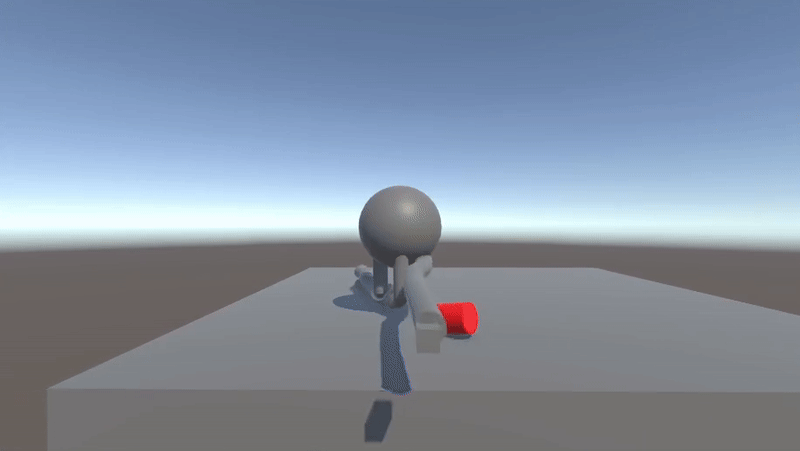
Game Visuals and Level Design
For an overall look of the visuals, we are going for a more cartoony look to match the feel of the wacky controls and gameplay. The octopus character itself is likely to have very goofy googly eyes and a cel-shaded look done with materials and shaders. The environment assets should be stylized and exaggerated in a comical way as well. Some of the images below act as inspirations for the environment shape, location, and colours:
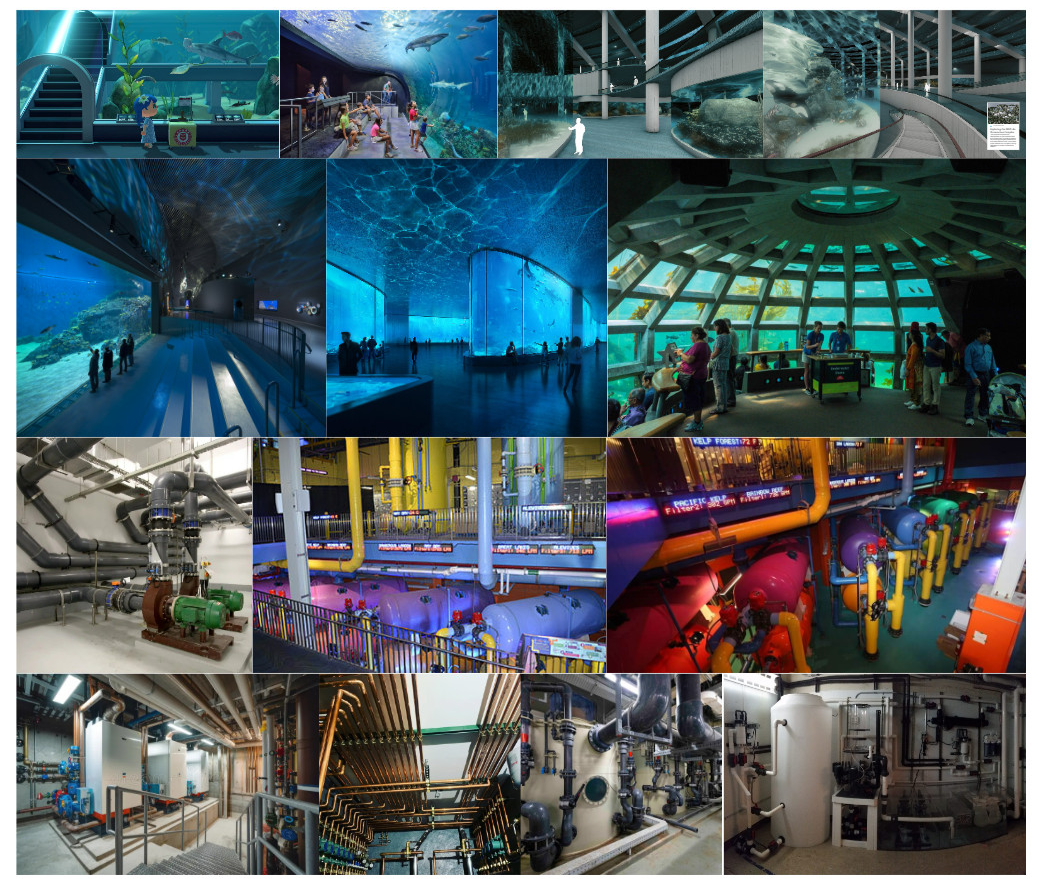
The environment is envisioned to have many pipes, twists, and turns for players to try to navigate. We have discussed the idea of having multiple levels, but for the sake of scope, we may stick to only one.
As of now, we are still discussing how exactly we want the tentacle rigs to work before the artists begin making finalized assets. We have made concept work and diagrams defining how exactly movement works, and soon should be making more concepts for the octopus character and the stylized environment before 3D assets are made. We are also discussing how exactly players will understand which tentacle is their own, and how to differentiate from other players. The use of colour-coding each tentacle came up in conversation, however, there should be more indicators for accessibility we have yet to discuss.
For the current level design, we have made a metric playground to learn how exactly the current implementation of the player's movement interacts with objects. Of course, since the movement isn't fully fleshed out yet, so we only have a loosely defined set of metrics to base levels off of. Moving forward, any work on level designs should be subject to much change.
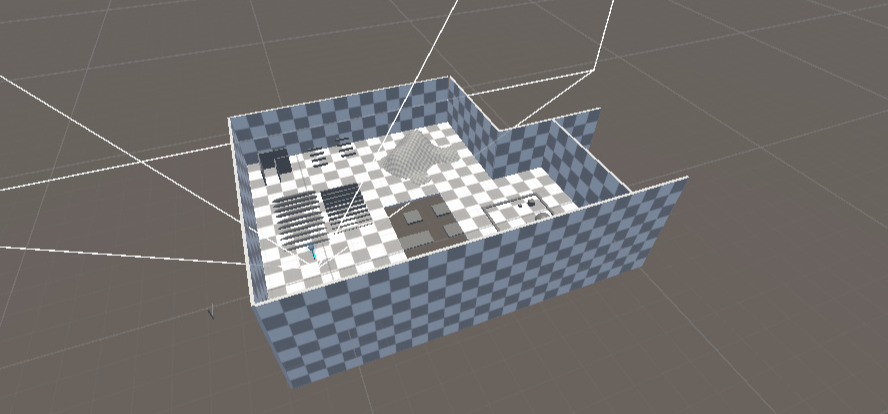
Game Audio
As part of the audio design we've created some placeholder audios and sounds that would fit with our octopus' movement. We have also discussed the use of FMOD to organize and play audios correctly. So far, we've recorded and designed two key audio elements:
- Octopus Movement: This covers the sticking and squishy, fluid sounds the octopus will get by moving, climbing or sliding around the environment.
- Grabbing and Releasing Mechanics: Both sounds will highlight the interaction between the octopus and the environment. This sound replicates the suction-like textures the octopus will create by grabbing onto the objects and letting them go.
We have also created a list of required audio assets that we will need for the full game experience - everything from the environmental ambiance (underwater, tanks, bubbles, tubes and background music, etc.). These references would help guide the tone and feel that we’re trying to build for our players to experience the marine life surrounding them.

Next Steps
In the next development cycle, we aim to prototype our first cooperative puzzle scenario and explore early-level interaction elements. These next few sprints will be used to implement and test multiplayer functionality and intractability. We’ll also refine tentacle physics and begin integrating audio.
Stay tuned for more updates as our octopus adventure unfolds!
Files
Get Gimme a Hand
Gimme a Hand
Gimme a hand-- or 3!
| Status | In development |
| Authors | izaka, Sydney, JoAndNight, ZeinSulayman, arvingingoyon, ThalesNagato, ChrisShin11, MarioCiaralli |
| Genre | Puzzle, Adventure |
| Tags | 3D, Co-op, Funny, Multiplayer |
| Languages | English |
More posts
- Devlog #10 - 1.0 ReleaseAug 06, 2025
- Devlog #9 - Beta ReleaseJul 23, 2025
- Devlog #8 - Updated Game DemoJul 16, 2025
- Devlog #7 - Post AlphaJul 09, 2025
- Devlog #6 - Alpha ReleaseJul 01, 2025
- Devlog #5 - Pre AlphaJun 25, 2025
- Devlog #4 - Playable Level & ReleaseJun 11, 2025
- Devlog #3 - Design DocumentJun 04, 2025
- Devlog #2 - Tech DemoMay 28, 2025
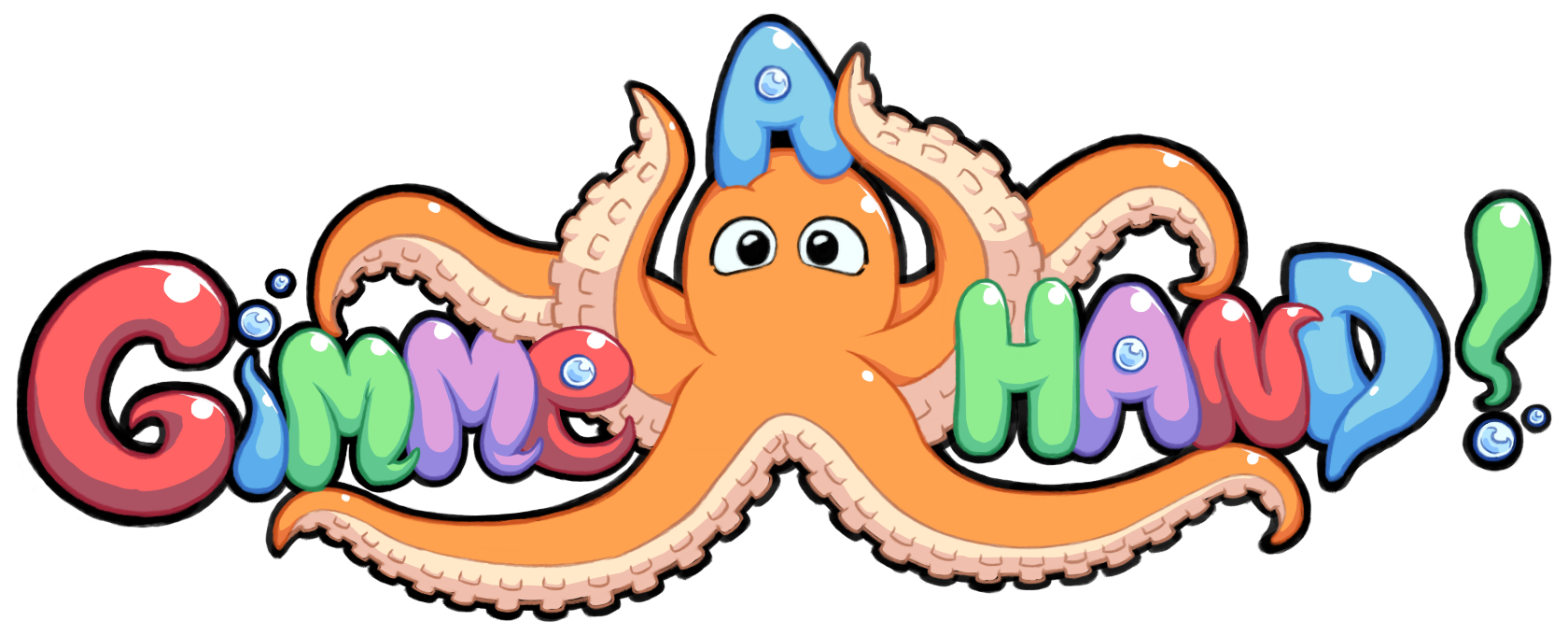
Leave a comment
Log in with itch.io to leave a comment.